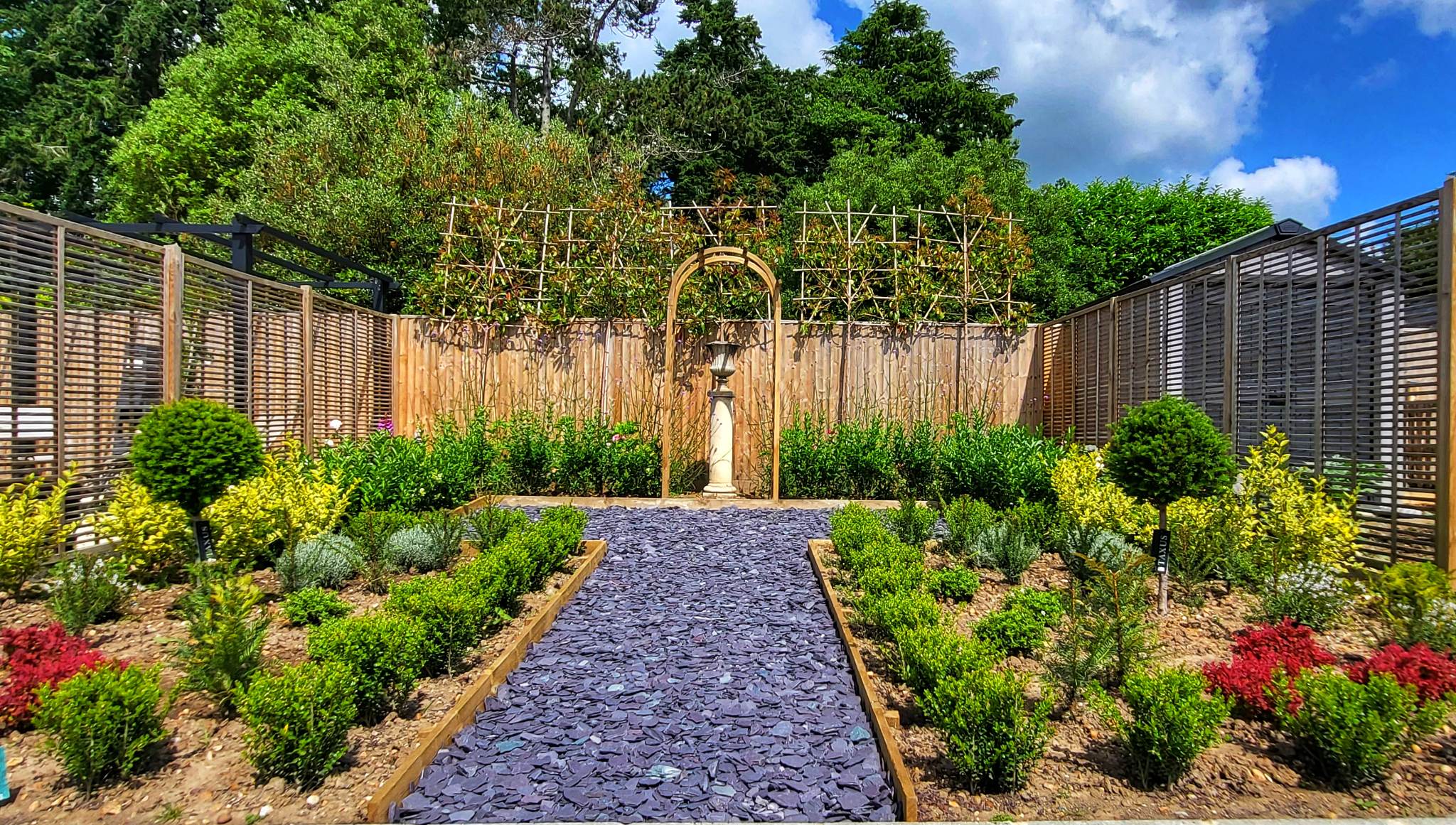A formal garden has a decadent and enduring style that complements both large and small outdoor spaces. Key elements and features include symmetry, straight lines, and geometric shapes. This design style requires careful and mindful planning to achieve that neat, symmetrical, and sophisticated look.

Choosing The Right Plants
When choosing plants for your formal garden remember to consider the type and condition of your soil, the areas that receive the most sun and shade and the maintenance involved. The size of the plant is also important as height gives the garden its overall style and composition.
The foundation for a formal garden design consists of structural and fast-growing hedges, evergreen shrubs and pleached trees. A uniformed colour palette is typical, traditionally whites, silvers, and pastels, organised around box hedging, neat lawns, and pathways.
Pleached Trees
Pleaching involves tying in and interlacing flexible young shoots along a supporting framework to create a narrow screen or hedge, this technique is perfect for extending the height of a wall or fence to create a private and enclosed space, or to make arbours, tunnels, and arches.
Popular choices for pleaching are lime, ash, beech, chestnut, hornbeam apples and pears, and can often be obtained ready trained.
Favourites for pleached arbours and covered tunnels include laburnum and wisteria which not only provide an abundance of colour but also a heady scent.
Topiary
Topiary is the art of clipping shrubs or trees into ornamental shapes which provide structure, intrigue, and interest. Traditionally symmetry, geometric shapes and hard lines are the framework of a formal garden design, and this is often achieved with neatly trimmed low boxwood hedges which also provide boundaries for borders.
Buxus sempervirens is a popular and instantly recognised feature in a formal garden and perfect for creating those sleek and simple lines, however it is susceptible to box blight and box caterpillar, which are capable of completely defoliating the plant.
There are plenty of dense, leafy alternatives to Buxus sempervirens that can be used instead, we are quick to recommend Japanese holly (ilex crenata), it’s very similar to Buxus but has a multitude of benefits, one of them being its resistant to box blight.
If you’re looking for something to replace box hedging all together one alternative is mass planting of lavender. Although not as neat and clean as clipped box hedging, the flowers look and smell wonderful.

knot Garden
If your outdoor space allows, you may want to include a knot garden, a feature often found in formal design, to provide texture, pattern, and fragrance. This is achieved by creating an intricate, symmetrical pattern much like a tied rope within a square border of pruned dwarf boxwood, sage, rosemary, or lavender. With stone paths integrated within the knot structure or around the boarder. Roses, herbs, or perennials can be used in the beds created between or around the border, such as marjoram, thyme, lemon balm, chamomile, rosemary and calendula.

Hydrangeas
Hydrangeas are an elegant addition to any formal garden and perfect for lining paths and brightening up garden borders with its beautiful eye-catching structure. Hydrangea paniculata ‘Little Lime’ is perfect for smaller gardens, its compact but effortlessly exerts a formidable presence, if its huge blooms that you love why not try Hydrangea arborescens ‘Annabelle’.
Agapanthus
A beloved favourite is Agapanthus with its elongated stems and magnificent flower heads in beautiful shades of blue and white, they look stunning planted in long ribbons through borders or in blocks. These sun-loving plants can flower repeatedly for several weeks throughout the summer, and return to put on another show year after year.

Centre Pieces
The focal point of a garden is whatever you choose to draw the visitors attention to. Focal points engage attention and create a sense of intrigue and interest in the garden. Often the garden is designed in symmetrical fashion around a focal point, it doesn’t necessarily have to be in the middle it can be in the centre, at the beginning of the composition or elsewhere. Any ornamentation can be used as a focal point such as fountains, decks, waterfalls, urns, statues, or arches.

Show Garden Progress
The formal garden is really coming to life, its once empty beds are now filled with gorgeous evergreen shrubs in a variety of beautiful colours and textures, gently accompanied by the clusters of sweetly fragrant New Dawn roses.





We’re Here to Help
If you’re looking for advice on something we’ve not mentioned above, our friendly staff are always on hand to help.
